The SaaS market is growing quickly and globally, and this trend seems to be long-lasting. It's forecasted to exceed $300 billion by 2026. To withstand the competition, put core pieces like discovery and UX design, architecture development, optimization, and scaling together in a way that allows you to create a truly significant SaaS solution.
What is Software-as-a-Service?
SaaS applications deliver services directly to users over the web, eliminating the need for software installation on devices. SaaS solutions often run in public clouds, but software owners can also host them on local servers.
In a SaaS model, it is essential to embrace a value system where all clients receive a unified experience. This entails running the same software version for every client, deploying updates simultaneously for all, and following a consistent onboarding and management process.
SaaS vs Traditional Software Business Model
As a system, SaaS app can be built with the help of broad-ranging technical approaches and methods. However, SaaS is a business model first, and technology second. That’s why we need to compare the SaaS business model with the traditional software business model.
Allow a team of experienced SaaS developers analyze your current solution and modernize it, or provide SaaS development services from scratch that allows you to easily operate, update, and maintain your application.
Traditional Software Business Management and Operation: Hard To Grow Fast
The traditional model of software packaging and delivery means that each customer gets from a provider a software product and has to install it in its own independent environment following strict requirements to the operating system, the database system, and so on, according to the purchased software version.
Individual environments may lead to the necessity of software customization to fit the environment's requirements, otherwise, the software will not work. As a business owner, you have to dedicate resources to manage, update, and support these customizations. Thus, the traditional software business model could lead to additional operational costs for each new customer, while cost optimization options are limited by default.
The one-off customization business model is suited for companies whose growth and the number of clients are moderate. In this case, the requested provision of unique features to every environment can be considered as a sales tool.
Whereas a business begins to grow exponentially and new clients are added fast, then the rising incremental expenses associated with the increasing number of dedicated teams start to erode the business margins.
The traditional software business model also slows down a company's development pace and does not allow for keeping up with the market. The attempt to implement new features into customers’ systems may hit limits, both objective and subjective, blocking sources of potential income for software business owners.
Facing such complexity dedicated teams have to spend more time on feature analysis, thus, delaying their delivery to the customer. The focus shifts from delivering to verification. The new feature testing takes most of the operational processes. Dedicated teams now are more focused on overhead operations and technical aspects of testing, leaving less time for delivering new functions, which were conceived to take the company forward.
By accepting this slow pace and more cautious approach the development cycle increases drastically, constituting large gaps between the stages in which the solution is visualized, built, and supplied to a customer. Together these factors can push back competitive efforts and lag behind the market.
SaaS Business Management and Operation: Easy To Grow Fast
Saas is a service-centered model whose main advantage is the fast release of new features.
With the SaaS model, the focus is shifted to how customers are onboarded to your service, how fast they appreciate its value and how rapidly you provide the features that meet customers’ needs.
SaaS providers' goal is to deliver new features often and fast. With the SaaS model, it is possible to release new features when needed as opposed to the traditional model which is expected to present new releases periodically, and the development cycle is scheduled for two years in advance. SaaS companies can respond quickly to market changes almost in real-time.
The main idea behind the SaaS model is that a SaaS provider (or a customer) has a single SaaS environment (standard multitenant architecture) and every customer is considered to be a tenant (renter) of this environment. Either a company with a large staff or a single user can be a tenant in the SaaS model.
A SaaS provider operates, upgrades, and maintains this environment. Thus, tenants do not need to have their own on-premise hosting solution. On the contrary, they are being hosted, managed, and billed in the shared SaaS environment.
The SaaS environment also offers a wide range of shared services. These are accessible to all tenants. The onboarding services, the identity management services, as well as metrics and billing management, are available to every SaaS provider’s customers.
The essence of Saas is to enable a universal set of services every tenant can use.
Whereas all customers are using the same version of a software product, new features can be deployed at the same time during the single, common-for-all-tenants processes.
This makes it possible to monitor and coordinate all tenants using a unified management scheme thereby forming a shared experience. It also allows the add new customers to the SaaS environment without the additional operational overhead costs.
With the SaaS model, you can easily add either 100 or 1000 new tenants and you can consider each new wave of customers as a “growing point” in your business not a headache.
A concept of a shared experience is a great opportunity to boost growth, speed up agility, and enhance production efficiency, which is the core of the SaaS business model.
Types of SaaS Applications
Common SaaS app includes customer relationship management (CRM), which helps businesses in managing customer interactions and enhancing satisfaction. Other popular types of SaaS development platform are enterprise resource planning (ERP) for overseeing business processes and data analytics tools for making informed decisions based on analyzed data.
Billing, HR, eCommerce, project management, learning management systems (LMS), electronic health records (EHR), customer service apps, document management, fleet management, collaboration and productivity solutions, and IT service management (ITSM) are some other examples of SaaS applications available to businesses. The flexibility and scalability of these solutions have made them an attractive option for businesses of all sizes looking to streamline their operations and improve efficiency.
SaaS Application Architecture
- Multi-tenant. This design allows multiple customers to share the same infrastructure while keeping their data separate and secure. Users can access the same application without accessing each other's data.
- Single-tenant. In this scenario, each customer maintains a unique instance of the software, enhancing security through data isolation.
- Horizontal SaaS model. These applications serve a broad spectrum of businesses across different industries. Think of them as universal tools - like project management software ClickUp or a video conferencing tool Zoom - relevant to any business field.
- Vertical SaaS model. These are custom-built applications targeting a specific industry. Imagine a specialized Electronic Health Records system for healthcare providers, or a tailored retail inventory management system for e-commerce companies.
Benefits of SaaS Application Development
Benefits of SaaS Development for Users
- Anytime, anywhere access from any device with a stable internet connection.
- Seamless updates providing the latest software version without user intervention.
- Effortless scalability to upgrade or downgrade plans as needed.
- Enhanced reliability, as the app remains online even if a server experiences downtime.
Benefits of SaaS Development for Business
- Flexibility for easy system modifications as requirements change.
- Steady revenue streams with monthly or annual subscriptions.
- Optimal performance, eliminating communication lags or bottlenecks.
- No software installation, maintenance, or updates required for users.
- Minimal hardware expenses.
- Robust security with standard protocols, including SSL and TLS encryption.
- Prompt feature enhancements and bug fixes.
- Straightforward scaling to accommodate growing demands.
What is SaaS Application Development?
SaaS application development involves building software to provide services to clients over the web.
SaaS development and management encompass activities such as creating product documentation, UI/UX design, SaaS architecture design, SaaS software development, quality assurance and control, deployment to the server or the cloud, and application maintenance.
SaaS Solutions vs Web Application
A web application refers to “technical means of access to software”, it often describes any app accessed through a web browser. SaaS applications, on the other hand, are not about “technical means of access to software”, but about “paying for access to the software”. SaaS apps can be web applications, desktop, or mobile ones, however, SaaS web applications are the most common.
To illustrate, Amazon.com is a regular web application, while Amazon Prime is a simple SaaS web application with its primary feature being access to video content.
The Full Scale of SaaS Application Development Services
To develop a successful SaaS app, you’ll go through multiple stages of the SaaS development process, from ideation to deployment and everything in between. Belitsoft SaaS development team sets up the entire workflow, including all or most of the following services, depending on the project’s specifics.
- Consulting. With agile methodology, advanced design skills, and innovative strategy, we collaborate to address real-life business challenges by devising solutions for long-standing problems or developing fresh ideas for today's evolving marketplace.
- SaaS UX/UI design. Our UX team adopts a user-centered approach, creating detailed personas, mapping user journeys, and developing wireframes and storyboards for an optimal experience. We also offer UX audits to improve existing SaaS products. Our UI designers concentrate on visual identity analysis and concept creation, providing clickable prototypes, comprehensive UI kits, animations, and developer specifications.
- SaaS architecture design. Belitsoft develops scalable multi-tenant architectures that effectively handle peak loads and maintain 99.98% uptime.
- Performance optimization. Our team ensures app dependability and consistency, providing positive user experiences regardless of network conditions.
- SaaS evolution. We integrate sought after features like video streaming, VoIP, chatbots, AR/VR, AI, and analytics to modernize the app, differentiate your SaaS product from competitors and enhance user experience.
- Cloud migration. We help migrate SaaS apps to alternative cloud providers or transform on-premises applications into cloud-adapted SaaS solutions.
- API development. Our services include API development and integration to expand the SaaS solution capabilities and streamline workflows, delivering a robust, user-friendly experience.
- Software testing and QA. Following global standards, we employ manual and automated testing best practices to ensure comprehensive coverage and data accuracy.
- Ongoing maintenance & support. We offer continuous support, timely updates, upgrades, data security, and efficient issue resolution for seamless operation of your SaaS platform or app.
Looking for skilled SaaS developers with years of experience and a proven track record to help with your project? Provide more details to our specialist for a free consultation.
SaaS Development Process
We recommend following these steps to create an exceptional SaaS product.
SaaS project discovery and planning
During the discovery phase of the SaaS development services, you need to carefully research the current market, define your customer base, and describe the needs of your users and how best to serve them. Formulate your project's goals and objectives based on this research.
Competitor analysis is another crucial aspect of this process. Reviewing existing apps, identifying their weaknesses, and improving them is a valuable practice. Document your findings and use them to draft a set of features for your application.
Besides, collect the functional specifications, using various techniques and tools such as user interviews, structured and thorough discovery sessions, and analytics systems. Functional requirements may comprise details of screens, forms, responses, user interactions, workflows, and reports and dashboards.
Payment Model Planning
Decide on your payment model as part of the planning process. Offer the following options to your users:
- Freemium pricing. Provide limited features and encourage users to transition to a premium plan with the full package of features.
- Per-feature pricing. Offer several sets of features at different price rates.
- Usage-based pricing. Charge customers based on the amount of services they use.
- Per active user pricing. Base charges on the number of users accessing the package of services.
- Flat-rate pricing. Give users access to the full package of features for one price paid monthly or annually.
As a result of the planning and discovery phase, create a project requirements specification. This document should describe the application's features, technical details (architecture and components), use case scenarios, and the scope of work. Here is a general example of requirements specification.
Selecting a SaaS Hosting Provider
Determine a cloud deployment model:
- Public cloud: Multiple users share computing infrastructure and resources on public cloud platforms, leading to cost reduction. Some industries may have regulatory requirements that prohibit the use of public cloud platforms.
- Private cloud: Offering exclusive control over the computing infrastructure and resources, a private cloud deployment provides a similar level of security as on-premises IT infrastructure. Private cloud platforms are more expensive compared to public cloud platforms that share computing resources among multiple tenants.
- Hybrid cloud: Combining the use of public and private clouds, the hybrid cloud model allows you to run security-sensitive workloads on a private cloud while other workloads run on a public cloud. This approach helps you meet regulatory requirements and also saves on development costs.
After choosing a cloud deployment model, decide on the ideal type of cloud platform:
- IaaS (Infrastructure-as-a-Service): With an Elastic Compute Cloud (EC2) service provided by a managed cloud services provider (MCSP), you can entrust cloud infrastructure management to the provider while you tackle the rest of your tasks.
- PaaS (Platform-as-a-Service): In this model, the MCSP handles the cloud infrastructure, operating system, middleware, runtime environment, and other cloud services, allowing you to focus solely on developing web applications. A good example of this is AWS Elastic Beanstalk.
- MBaaS (Mobile-Backend-as-a-Service): An MBaaS platform takes care of your mobile app's backend. With this platform, there's no need to worry about overseeing the cloud infrastructure or persistent storage. The cloud provider handles it for you. AWS Amplify is an example of an MBaaS platform.
Finally, choose from the best cloud providers:
- Amazon Web Services (AWS) delivers reliable performance, robust data protection, and a secure network. You pay only for the services you use based on your specific needs, eliminating extra costs or fees when services are no longer needed. However, AWS plans do not include customer support assistance, which requires an additional fee.
- Google Cloud provides a wide range of computing, storage, and application development services for your SaaS product. It ensures dependable performance in any location and offers powerful analytical tools, as well as scalability. Like AWS, Google Cloud follows a pay-as-you-go pricing model, but its customer support service can be expensive.
- Microsoft Azure offers top security, reliability, and scalability for your SaaS solution. It easily integrates with commonly used Microsoft tools in many organizations. Azure adopts a pay-as-you-go pricing model, similar to AWS and Google Cloud, but charges extra for live support.
Choosing SaaS Development Technology Stack
Teams commonly select their project's tech stack based on their preferences and experience. Let's explore the most widely used SaaS solution development methodologies and technologies.
For SaaS front-ends, developers typically choose JavaScript/TypeScript-based frameworks and libraries, such as Angular, React, Vue.js
For native mobile front-ends, you have native languages like Swift, Objective-C, Kotlin, and Java Mobile. You can also choose cross-platform JavaScript frameworks: React Native, Xamarin and Flutter.
For back-end SaaS development, there are also several routes you can take:
For database management, developers can select from popular options like MySQL, PostgreSQL, and MongoDB.
Partnering with an experienced SaaS development team can help you make well-informed decisions when choosing the right tools for your SaaS software development, which is a defining step in building your app.
UX/UI Design
UX design involves creating a blueprint for the platform that concentrates on the user's experience. UI design focuses on the look and feel of the platform.
It's important to understand that every icon, button, or form in the design of a platform adds to its overall feature set. Essentially, creating a visual representation of a button is much quicker and less expensive than actually developing it. This is because behind each button, there might be a complex set of logical connections to various entities, calculations, and integrations.
Software Development and Testing
The development stage is where your app is finally put together. Business, design, and architecture all come into place to create the framework for developers to transform your concept into a SaaS application.
Typically, the initial phase in SaaS solutions development involves creating the minimum viable product (MVP). This includes constructing the first version of your product to test the idea, receive feedback, and evaluate the business monetization approach. This is also an opportunity to save money if the SaaS concept doesn't pan out. Developing an MVP can help minimize costs as well.
Front-end developers implement the UX experience forged in the design stage while back-end engineers provide the logic and functionality behind the user interface.
Development includes quality assurance and testing at every stage. SaaS developers perform initial unit testing while QA engineers take over after they complete each feature.
Product launch, maintenance, and further development
The key feature of a SaaS solution is that development does not stop after the product is first launched. Your application will constantly evolve, reflecting user feedback and requests. You will add new features and deliver fixes to keep your customer base.
Continuous Deployment
From this perspective, a well-configured continuous deployment process is an integral part of both SaaS and traditional software development. Experienced DevOps engineers manage the continuous integration and deployment (CI/CD) pipeline and automating workflows to ensure successful delivery every time you roll out new features.
Having a good support team is also very important. It's a great practice to keep track of customer reviews in app stores or other SaaS platforms where your app is showcased. Not only does this help eradicate user experience issues, but it also provides you with ideas for further product development.
Challenges in SaaS Development Life Cycle
The SaaS development life cycle isn't always smooth sailing and comes with its own trials and tribulations. Here are a few challenges we've seen companies face time and again.
Providing 100% uptime during new releases
To retain your customers, you'll continuously update your SaaS application. It must always be available to users, and new releases should not break the system or disrupt its operations.
A zero-downtime deployment strategy ensures 100% availability of your app to users. This approach typically involves using the previous version of the software as a backup environment. In this way, if any issues arise after releasing the new update, the traffic can be redirected to the old version.
Managing SaaS subscriptions
You can use a third-party solution like Stripe (which is also a financial SaaS app) to handle your recurring payments, but this will incur a monthly fee. Stripe provides an easy-to-integrate billing system for websites and mobile apps, allowing you to customize pricing models and create the necessary logic.
Alternatively, you could build a custom subscription management system. Despite initial development costs, this one-time investment allows for a tailor-made solution for your specific SaaS offerings.
For businesses with an iOS Mobile app, remember that the Apple Store requires use of its own payment system, which takes approximately a 30% commission on transactions. One way to avoid this is to handle payments exclusively through the web app, while the iOS app is used to access paid services. This strategy highlights the importance of thoughtful planning in your payment architecture.
Complex third-party service APIs
Some features are just not worth building from scratch as they are available in other apps. There is no need to reinvent the wheel. Many third-party solutions offer their functionality through APIs, such as payments, analytics, streaming, etc.
Some APIs are more challenging to integrate than others. Sometimes it can be as easy as adding a few lines of code or just a link to the third-party service. However, in other cases, developers may have to examine documentation or even build their own API to integrate with the service.
Ensure your quality assurance team is ready, so they can create manual and automated test suites to check for integration issues.
Meeting the needs of the customers
Developing a SaaS product that fulfills all customer expectations is a significant challenge. Moreover, these expectations may evolve over time, requiring continuous adaptation to meet their needs.
To tackle this challenge, it's important to adopt a customer-focused approach right from the start. Conduct thorough research into your customers' needs and listen to their expectations.
Take special care in conceptualizing your product before beginning the actual programming process. By doing so, you can incorporate your users' requirements into a solution that will fully meet their needs and satisfy them.
Hiring a development team with a service-oriented mindset
This means that every member of the team understands the project's specific needs, goals, and scalability potential. When hiring, it's best to look for individuals with experience in SaaS application development who are passionate about using technology to solve problems and create outstanding software-as-a-service solutions.
Choosing the right technology
Selecting the right technology plays a significant role in the scalability of SaaS applications. Consulting with a SaaS app development vendor helps you pinpoint the most effective tech stack for your project, laying the foundation for a scalable solution.
SaaS Management
Proactive monitoring and management of all SaaS applications within a company's technology portfolio is crucial for addressing common challenges and bottlenecks.
Why do businesses need SaaS management?
Effective SaaS management can help resolve issues, such as:
- Wasted spending on overlapping SaaS, excess licenses, and overpriced vendors
- Increased time for service and user lifecycle management
- Managing many renewals
- Failed SaaS implementations
- Unmanaged SaaS platform or apps, also known as Shadow IT
SaaS management goals and benefits for business:
- Controlling SaaS application expenses
- Managing SaaS licensing
- Planning SaaS platform renewal
- Handling SaaS vendors and contracts
- Ensuring visibility into all SaaS purchases
- Preventing and reduce shadow IT
- Securing a SaaS platform or app
- Maintaining an updated SaaS inventory
- Enhancing IT collaboration across the organization
How to implement SaaS management?
Step 1. Discover. The process of discovering apps relies on three factors: visibility, collaboration, and recommendations:
- Visibility: Knowing what software your business already has.
- Collaboration: Finding easy ways to access that software.
- Recommendations: Identifying the best SaaS solutions for companies like yours.
Step 2. Purchase. The SaaS management journey's purchasing process involves three major aspects: authorization, payment, and spend control:
- Authorization: How can I get approval for the new software?
- Payment: How can I make payments compliantly?
- Spend control and reduction: How can I manage the expenses associated with this application as my business expands?
Step 3. Manage. Consider this stage across five dimensions:
- Automation: How can we automate administration tasks, such as invoicing, bookkeeping, and reconciliation?
- Onboarding: How can we simplify bringing new employees on board or managing those who leave or change positions as the company grows?
- Budget and Spend Management: How do we manage the ever-changing targets of budgets and spending associated with SaaS platforms or applications?
- Usage Tracking: How do we track which apps are used within the company?
- Compliance: How can we simplify managing compliance and risks associated with SaaS subscriptions?
Step 4. Cancel. The last stage of the SaaS management journey revolves around visibility, savings, and cancellations:
- Visibility: View who is utilizing which software.
- Savings: Identify the 30% of wasted software in your company and cancel it.
- Cancellations: Simplify and standardize cancellations.
SaaS Development Methodologies
Choosing the right methodology impacts the entire project's success, budget, timeline, and user satisfaction.
The three most effective SaaS development methodologies are Waterfall, Agile, and Lean.
Waterfall
What is it?
This is a strict, linear approach with sequential stages such as requirements gathering, design, implementation, verification, and maintenance. Each stage has specific goals and must be completed before moving on to the next with no overlap or cycling back.
Ideal for:
- Projects with a well-defined scope.
- Situations requiring strict budget control.
Less Suitable When:
- Rigidity and reliance on initial requirements make changes during SaaS development costly and challenging.
- Delayed testing stage increases risks and can lead to project failure.
- The product is delivered all at once with user feedback only collected at the very end, which may result in failure to meet user needs and substantial rework.
Agile
What is it?
Agile methodology uses a flexible, iterative approach with development divided into small, incremental stages or Sprints. Each Sprint involves planning, designing, developing, and testing a new functionality. The team builds, validates, and gets client approval for each functionality before moving onto the next one. This approach allows for continuous feedback and adjustments throughout the project.
Ideal for:
- Projects with shifting requirements.
- Businesses venturing into new markets.
Less Suitable When:
- Scope predictability is low, which could potentially lead to scope creep, resulting in a larger or more complex project than initially intended.
- Certain projects may not fit the agile model and may perform better with a structured approach like Waterfall, especially those with well-defined requirements and less probability of undergoing significant changes.
Lean
What is it?
This method aims for continuous improvement by reducing waste and enhancing workflow, focusing on delivering customer value.
Ideal for:
- Projects managed by small teams.
- Projects with tight budget constraints.
Less Suitable When:
- A project requires long-term strategic planning and Lean's focus on short-term efficiency gains might overshadow this.
- Overemphasis on cost reduction might compromise product quality.
What is the SaaS Development Cost?
The costs of SaaS application development can vary based on the project's complexity, the variety of features, its integrations with other services, the chosen technologies, and dependencies on legacy systems. The project's price tag also heavily depends on the type of team you plan to assemble.
The typical SaaS product development process involves the following stages, which may overlap or occur simultaneously:
- Validation and Planning: Establish the feasibility and scope of your project.
- MVP Creation: Develop a minimal viable product to test your concept.
- UI/UX Design: Create an intuitive and appealing user interface and experience.
- Front-End Development: Build the parts of the application that users interact with.
- Back-End Development: Develop the server-side infrastructure that supports your application.
Each staffing option—hiring an in-house team, working with freelancers, or outsourcing to a software development team—carries its own benefits and drawbacks.
In-house teams are efficient yet costly
With an in-house team, you have the luxury of being in full control of the project life cycle. The SaaS developers are completely involved and dedicated to your project, so they know all of its intricacies.
This control comes with drawbacks, though. With a fully equipped in-house team, you must pay their full salaries, taxes, and medical expenses. You also need to provide office space, hardware, software, and other supplies.
Freelancers are affordable but may be hard to control
Freelancers are beneficial in that they provide a targeted skillset. They also collect payment only for their services and have no overhead for management. However, they tend to be less focused and dedicated as they often have several projects in the works at the same time.
This option is suitable when you are looking for specific expertise. At the same time, searching for freelance talent can be just as challenging as staffing an in-house team. You might also encounter difficulties managing a workforce of several freelancers.
Dedicated SaaS development teams offer a middle ground
Choosing a dedicated SaaS development team from a reputable outsourcing company provides an autonomous solution for your project, bundling necessary expertise from various specialists - business analysts, software engineers, cloud experts, and DevOps developers - under one roof.
This approach is often more cost-effective than an in-house team as the outsourcing partner handles recruitment and management. Though more expensive than individual freelancers, it ensures higher quality control and mitigates risks, like faulty coding, that may come with freelancers.
Ultimately, working with a dedicated development team offers the best cost-value ratio.
Costs depend on the developer's locale
Depending on your location, you might opt for hiring developers outside of your region to lower your expenses. This is because the average developer’s rates vary across different regions:
- North America or Canada: $100 - $200 per hour
- South America or Asia: $25 - $60 per hour
- Western Europe: $60 - $100 per hour
- Eastern Europe: $30 - $70 per hour
Regions with competitive rates have consistently demonstrated the best cost-value ratio, as Eastern Europeans have prolific technical skills, a powerful drive for personal development, and high standards for the quality of their work.
Team up with a Reliable SaaS Development Company
Embarking on SaaS application development on your own is a challenging endeavor. An experienced SaaS development team can take the weight off your shoulders. They can provide an initial consultation, project discovery, and take over the technical side of development.
However, even the brightest project ideas can falter if you choose the wrong partner for SaaS application development. We suggest a few tips on how to find a trustworthy team:
- Check their portfolio: Find projects that resonate with your idea and see how well the team handled them. By the complexity of projects in their catalog, you can determine if they can handle yours.
- Look into their expertise: familiarize yourself with the services they provide, the platforms they build for, and the technologies they use. A great team also has experience building for your industry.
- Make reference calls with past clients: nothing can give you a better idea of a company's capabilities than a conversation with a client who had a system of similar complexity to yours. This is especially important if you can speak with clients from your own region or country. The local connection can often provide a deeper understanding and level of comfort in your decision-making process.
Read reviews from previous clients: reviews can tell you how well a team delivers on their promises, as well as how good they are at sticking to a certain budget and timeframe for a project.
Advantages of Cooperating with a Reliable Vendor like Belitsoft
Skilled SaaS software developers
Access to a team of skilled programmers with extensive technical expertise and knowledge in SaaS platform or app development.
Our team of developers is committed to delivering exceptional SaaS solutions based on top design, development, and management practices, using powerful web technologies.
Security and Compliance
We prioritize your application's security by following best practices like SSL and TLS encryption, risk management techniques, and thorough testing. We also integrate specific security protocols to meet industry compliance standards, such as HIPAA, GDPR, and PCI, depending on your project's industry.
Up-to-date tech stack with tailored guidance
We employ top coding practices to build robust applications and a versatile tech stack. Our efficiency ensures we stay within set timelines and budgets. If you're unsure about the right tech stack, we provide guidance post the Discovery phase to align with your project's unique requirements.
Cost-efficiency
We make informed decisions about the technology stack and allow for flexibility to adjust the scope of work within your specified budget. Our dedicated team of developers works together to minimize investment while ensuring that the development process is carefully planned to avoid unnecessary functionality and project overhead.
Quick time to market
We tailor our custom development services to your business specifics. By following Agile methodologies and using Continuous Integration/Continuous Deployment (CI/CD) and DevOps, we release new product versions every 2-3 weeks, ensuring timely delivery without sacrificing quality.
Let Belitsoft help your business benefit from the advantages that SaaS development methodologies offer. Let's talk in more detail.
Rate this article
Recommended posts
Portfolio
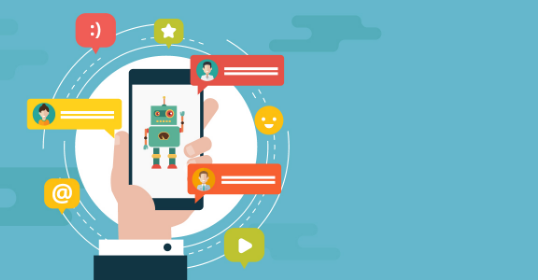
Our Clients' Feedback

















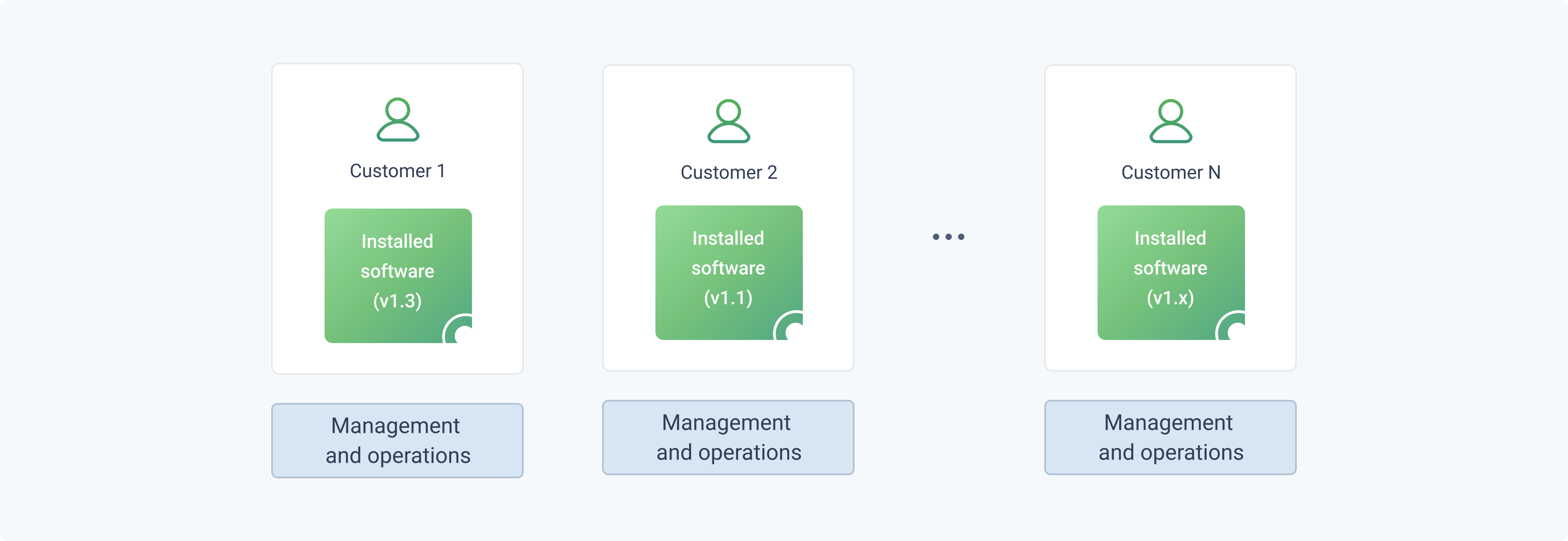
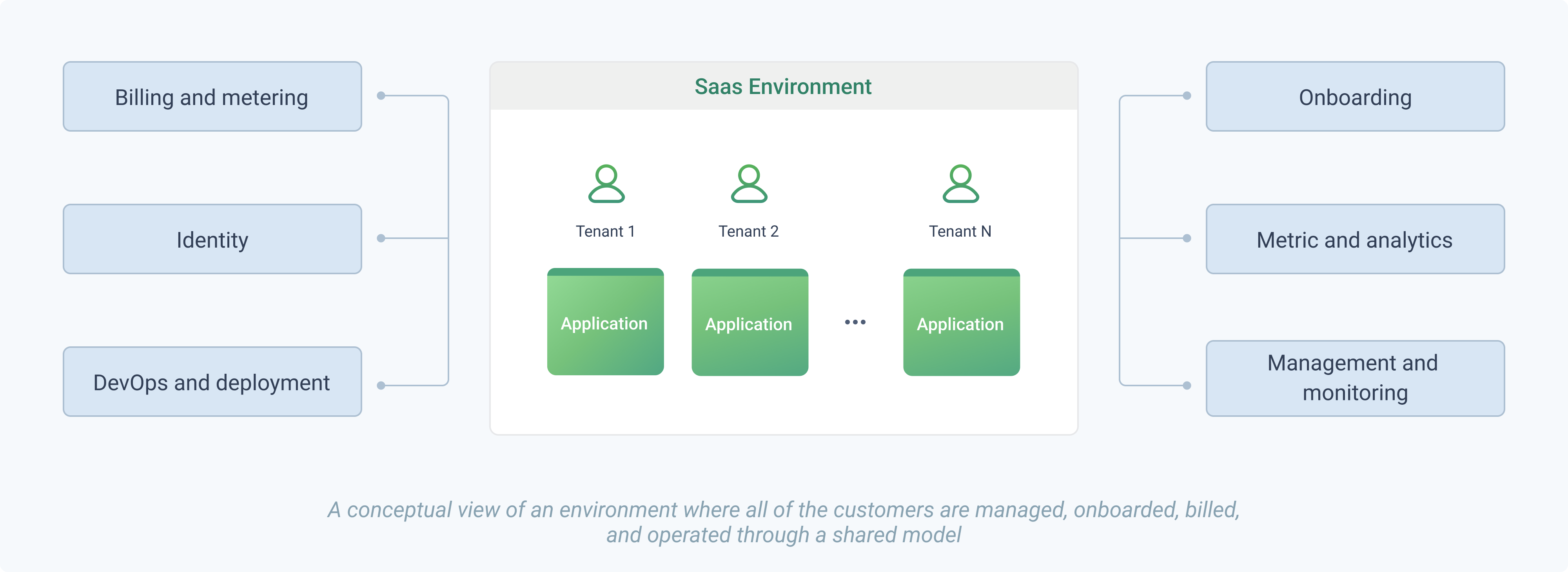
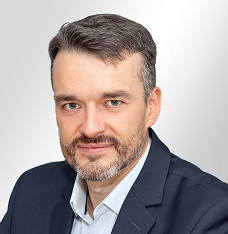
.jpg)
.jpg)
.jpg)
.jpg)
.jpg)
.jpg)
.jpg)
.jpg)
.jpg)
.jpg)
.png)
.png)
.png)
.jpg)
.png)
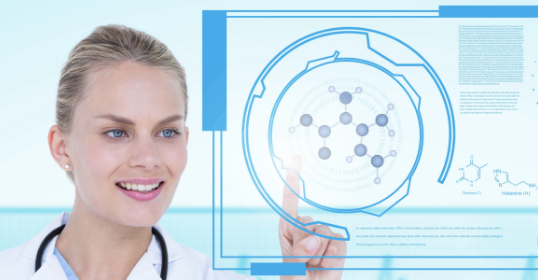

















We have been working for over 10 years and they have become our long-term technology partner. Any software development, programming, or design needs we have had, Belitsoft company has always been able to handle this for us.
Founder from ZensAI (Microsoft)/ formerly Elearningforce